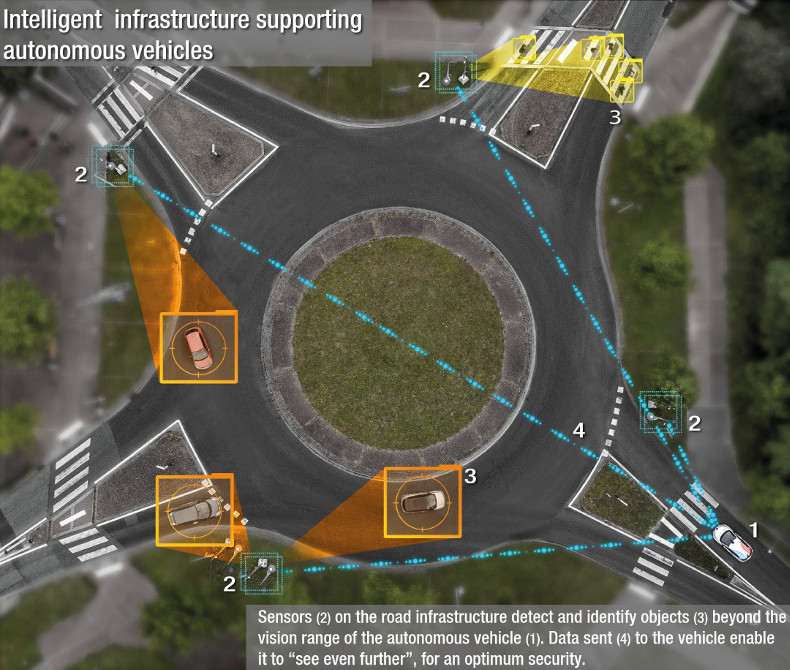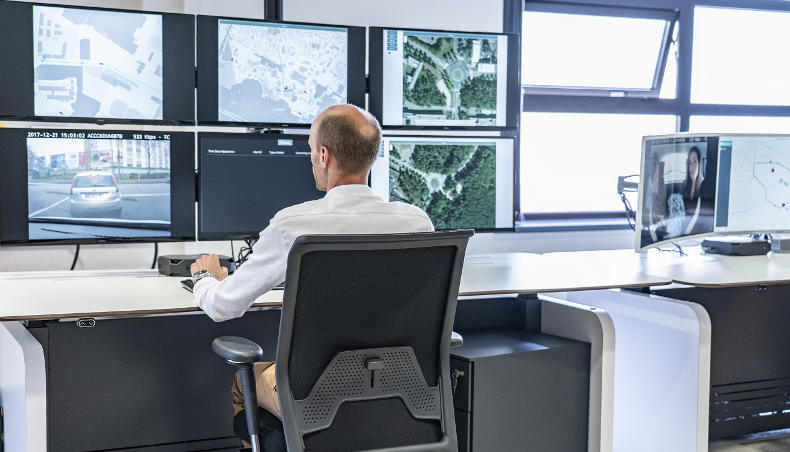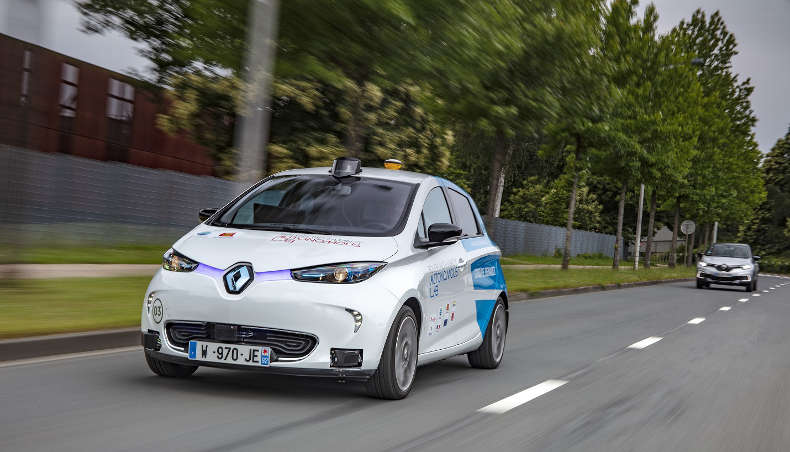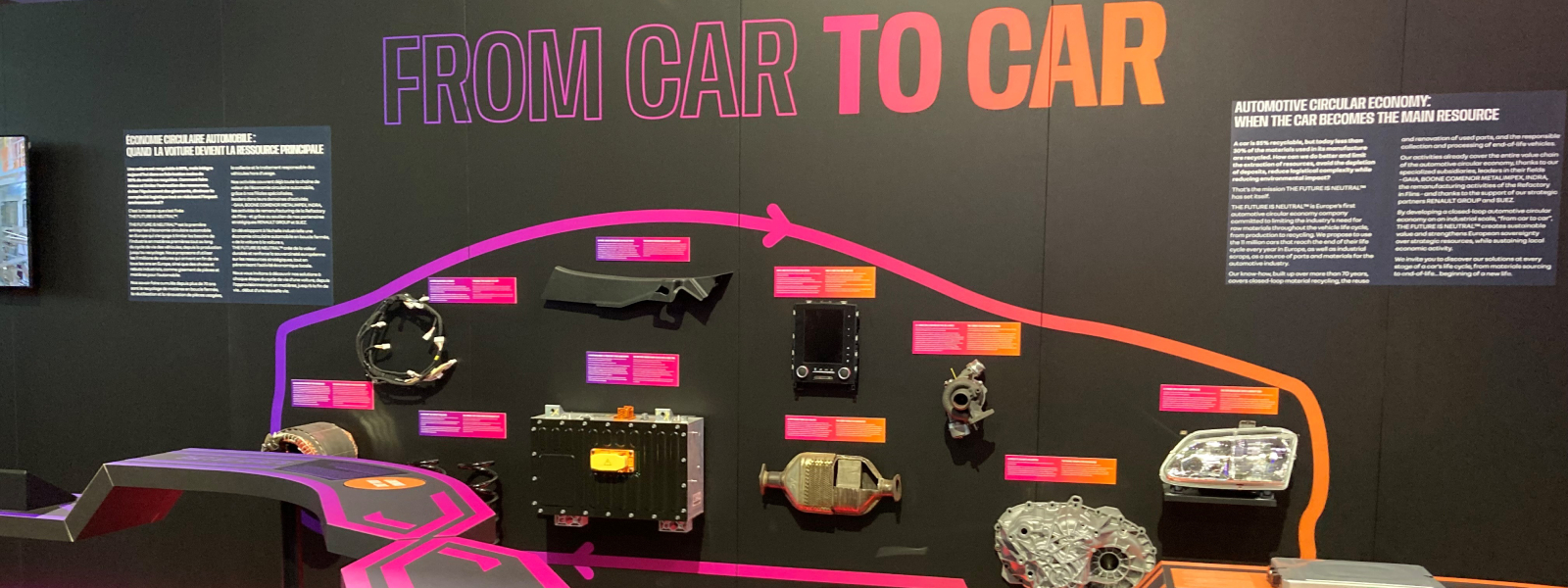

We believe that the on-demand shared mobility services of the future are a shared responsibility. The different partners* of the RNAL bring their respective expertise and cutting-edge capabilities in support of a pioneering drive to develop innovative, sustainable transportation solutions.
The goal is to experiment and develop a service that will provide on-demand transportation, without human drivers but not without human supervision. Thanks to the smart infrastructure, the autonomous vehicles can seamlessly transport passengers along validated routes embedded with technology that communicates with the fleet at points of care: roundabouts, traffic lights, pedestrian crossings and so on.
 Robo-vehicles connected to their environment and smart infrastructures
Robo-vehicles connected to their environment and smart infrastructures
Groupe Renault and Transdev have fitted the vehicles with cameras, laser scanners (LiDAR), differential GPS and HD mapping, ensuring 360° vision and precise positioning. The vehicles build a real-time 3D representation of their surroundings, that enables them to detect, locate and identify moving and non-moving objects all around them, to make the best decisions. 17 vigilant points have been addressed through strategically positioned sensors on the infrastructure along the route. These additional sensors send data to the vehicles, enabling them to see even further than with their own sensors, anticipate their environment and be warned of the presence of vehicles or pedestrians outside their range.
Control Center: the human touch into the mobility platform
Passenger safety is a key point. In the control center, operators have an eye on the vehicles at all time. A button allows passengers to communicate with them at any moment.
In case of an anomaly, the operators can interact with the car, trigger an emergency brake, reduce the speed of the vehicle or bring it to a stop without a delay. The control center has access to the real-time vehicles’ position, data from the cameras and lidars as well as images taken by the vehicle, which it receives through a secure connection.
 Mobility: Always a question of ecosystem
Mobility: Always a question of ecosystem
This experiment in Rouen is in line with Groupe Renault strategy: offering a commercial service of automated, on-demand mobility as of 2022, in line with its Drive The Future 2017-2022 plan, in cooperation with the Alliance.
A primeira parte da senha é : SEAM #MoreWillFollow
_______________________________________________________________________
*Métropole Rouen Normandie, Transdev Group, Groupe Renault, Matmut with the support of the Normandy Region and Banque des Territoires.
View more




